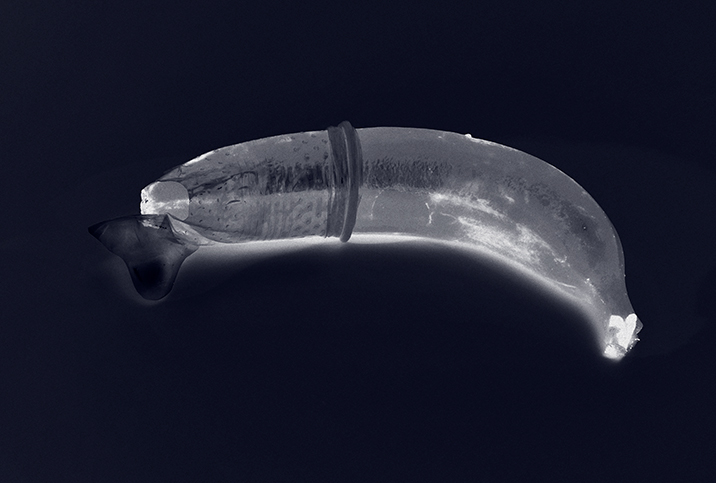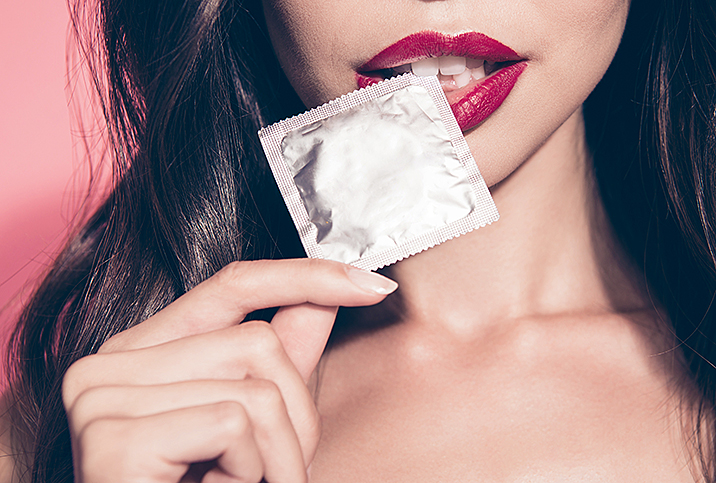What Should You Do If A Condom Breaks, Falls Off or Gets Lost During Sex?

Nothing kills the mood faster than looking down between you and your partner's sweaty bodies during (or after) sex only to discover the condom broke, slipped off or went MIA inside your partner. Any one of these situations opens the door to drugstore dashes, unplanned pregnancies and unwanted sexually transmitted infections, each of which need to be dealt with ASAP.
The most important thing to keep in mind: If there's even the possibility of pre-ejaculate or ejaculate in the picture, the woman is going to want to down emergency contraception (aka the morning-after pill) as soon as possible to best avoid the risk of an unwanted pregnancy.
If a condom isn't being used effectively, then you aren't getting the protection you need to prevent pregnancy, said Amy Roskin, M.D., medical director and head of clinical operations at telemedicine provider The Pill Club.
"You don't even need to wait until the morning after to use emergency contraception," she added. "It's more effective the sooner you take it after unprotected sex."
If you're unsure of your partner's status, you'll want to get tested for sexually transmitted infections (STIs), said Draion M. Burch, an OB-GYN and founder of sexual wellness brand Momentum Intimacy. "Most STIs won't show up until two weeks later," he said, so it's less of a rush—but no less important. Condoms will never be 100 percent effective against STIs, because even the tiniest amount of fluid shared—from the start of sexual contact to post-ejaculation—can lead to transmission.
But don't panic! There's a solution for every scenario.
Uh-oh: The condom broke
Sex is all about friction, right? But too much friction can have one pretty alarming consequence: ripping the condom, said Roskin.
You know how uncomfortable it feels when there isn't enough lubrication during penetration. Well, that wear and tear can literally pull at the condom until it breaks. Just think about how thin rubbers are. In the same way a strong muscle can still tear when overworked, a condom can rip when there isn't enough lubrication. Plus, condoms can tear if they come into contact with someone's nails, rings, piercings, teeth or some other sharp edge.
If you realize the condom broke before anyone comes close to orgasm—like, immediately after penetration—that's good news. Just toss it and put on a new one. Before you glove up again, ensure to check the box to see that the condoms aren't expired; the older a condom is, the drier and weaker the material gets. Exposure to heat, light, lotions and oils can also damage a condom's integrity, Burch said. Don't forget to use a water-based lube to keep things nice and smooth down there.
(P.S.: You're probably not going to feel a condom break, Roskin said. After sex, you should always check to see if there are any rips, tears or holes in it to make sure you're safe.)
Eek: The condom slipped off
Condoms may fit like a second skin, but they are not, in fact, attached to someone's penis. Which means they can potentially slip off at any time.
"One of the most common reasons for a condom to fall off is wrong sizing," Roskin said. "If a condom is too large, there's an increased chance of it falling off or leaking."
FYI: Condoms can also fall off if they're not put on properly, so "make sure you know how to wear one or put one on," said Burch. To do it right, carefully open and remove the condom from the wrapper, place the condom on the head of the erect penis, pinch the air out of the tip of the condom, then roll the condom all the way down the shaft. Voila.
If the condom slips off outside of the vagina, stop what you're doing and replace it! The same rules apply here as when a condom breaks—check the expiration date, make sure you're using enough lube and take emergency contraception/get tested ASAP.
And if it slips off inside the vagina...
Oh, shit: Where'd the condom go?
Good news: A disappearing condom is not actually lost—it's just out of sight.
"The condom is still in the vagina, but generally can't go further than the cervix," Roskin said. "And the average vaginal depth ranges from 3 to 7 inches"—not a depth that's inaccessible to reach.
To get it out, first wash your hands. Then: "You should then use one or two fingers to see if you can feel the condom and remove it," Roskin said. "You might try different positions if you can't feel it at first—sometimes squatting or lying down can bring it closer to the opening." And if you can't reach it, don't be afraid to ask your partner for help (after all, it took both of you to get into this sitch). Depending on the condom's location, it might be easier for them to reach it.
"If you can't find it or if you can't remove it, you should contact your healthcare provider to get checked," Roskin said. "Depending on the position, it's sometimes easier for them to remove it. Don't be embarrassed―this is not an uncommon problem at all!"
These things can happen to anyone. When it comes to any of the above condom mishaps, your most immediate concern is backup protection.
"I tell my patients to have emergency contraception on hand just in case something like this happens," Roskin said. "To avoid future issues, women can also have an IUD inserted to prevent pregnancy if that's right for you."
Just remember neither of those options protects against STIs, so if you rip through your supply of condoms, just go with some old-fashioned hand stuff.


















